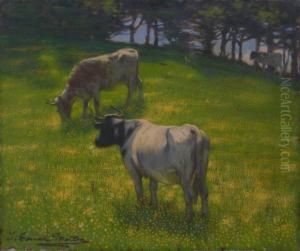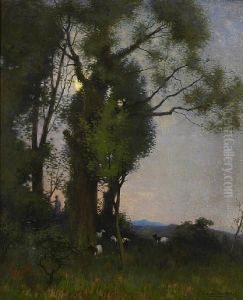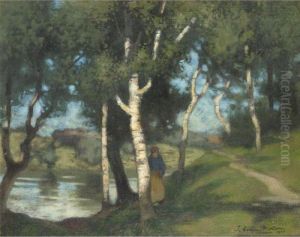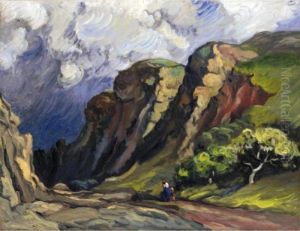Thomas Corsan Morton Paintings
Thomas Corsan Morton was a Scottish artist born in Glasgow in 1859. He was known for his landscape paintings, which often depicted the Scottish countryside. Morton studied at the Glasgow School of Art, which was a major center of the British Arts and Crafts movement and an important institution in the development of the Glasgow Style, an interpretation of Art Nouveau.
Morton was part of the Glasgow Boys, a group of young artists who rebelled against the prevailing Victorian artistic conventions. The Glasgow Boys were influenced by the realism of French painters, the Barbizon school, and the Impressionists, and they sought to bring a more naturalistic and immediate approach to their work. They often worked en plein air, directly in the landscape, to capture the transient effects of light and atmosphere.
During his career, Morton exhibited frequently and gained recognition for his work. He showed pieces at the Royal Scottish Academy and other notable venues. His paintings were appreciated for their vibrant color, skilled brushwork, and the way they captured the essence of the Scottish landscape.
Despite his success, Thomas Corsan Morton is less well-known today than some of his contemporaries. Nevertheless, he made a significant contribution to Scottish art in the late 19th and early 20th centuries. His work can still be seen in galleries and collections that focus on Scottish art from that period.
Morton's artistic production was not limited to landscapes; he also painted portraits and genre scenes. However, his landscapes remain his most celebrated and enduring works. Thomas Corsan Morton passed away in 1928, leaving behind a legacy of artistic achievement that continues to be appreciated by those who study and enjoy Scottish art history.


















